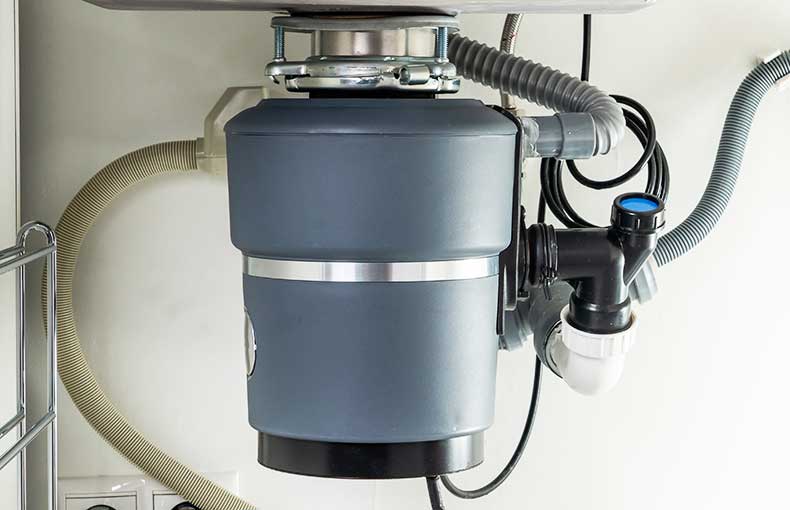The Comprehensive Guide to Fixing a Leaky Garbage Disposal
The Comprehensive Guide to Fixing a Leaky Garbage Disposal
Blog Article
The publisher is making several good pointers on the subject of How to fix a pretty consistent leak from my garbage disposal in general in this post further down.

Garbage disposals are crucial kitchen appliances that help in getting rid of food waste successfully. However, a dripping waste disposal unit can be an aggravating and unpleasant trouble to handle. Thankfully, several leaks can be dealt with conveniently with a few easy actions. In this write-up, we will go over just how to deal with a dripping waste disposal unit successfully.
Introduction
Garbage disposals are mounted under kitchen sinks and are developed to shred food waste into smaller items, permitting it to travel through the plumbing system easily. While these tools are typically reputable, leaks can occur gradually as a result of deterioration, loosened links, or damages to the device.
Step-by-Step Guide to Fixing a Dripping Waste Disposal Unit
Turn Off the Power
Before trying any repair work, make certain that the power to the waste disposal unit system is turned off to prevent the threat of electrical shock.
Find the Leakage
Identify the precise place of the leakage and identify the cause
Tighten Links
Utilize a wrench to tighten any type of loose links between the disposal system and the plumbing system.
Change Seals or Gaskets
If the leak results from used seals or gaskets, eliminate the old elements and replace them with brand-new ones.
Patching Cracks or Openings
For cracks or openings in the disposal device, use epoxy or a suitable patching product to seal the damaged area.
Determining the Source of the Leak
Prior to attempting to repair a leaking waste disposal unit, it is important to determine the resource of the leakage. This can generally be done through visual assessment or by performing easy examinations.
Visual Examination
Inspect the waste disposal unit unit very carefully for any indications of water leak. Pay very close attention to locations around seals, gaskets, and connection factors.
Evaluating for Leaks
One way to check for leaks is by running water with the disposal unit and looking for any type of noticeable indications of leak.
Usual Causes of Leaks in Rubbish Disposals
Worn Seals and Gaskets
Seals and gaskets play a critical role in protecting against water from leaking out of the waste disposal unit. With time, these parts can wear away, bring about leaks around the disposal system.
Loose Connections
The connections in between the waste disposal unit and the plumbing system can come to be loose with time, triggering water to leak out during operation.
Cracks or Holes in the Disposal Unit
Physical damage to the waste disposal unit, such as fractures or holes in the real estate, can likewise lead to leaks.
Tools and Materials Needed for Repairing a Dripping Waste Disposal Unit
Before starting the repair service process, gather the essential tools and products, consisting of a screwdriver, flexible wrench, plumber's putty, substitute seals or gaskets, and epoxy or patching material for fixing splits or openings.
Examining the Garbage Disposal After Fixing
Once the repair work is complete, test the waste disposal unit by running water with it to make certain that the leak has been settled.
Preventive Maintenance Tips to Avoid Future Leaks
To prevent future leakages, it is vital to do normal maintenance on your waste disposal unit. This consists of maintaining it tidy, staying clear of placing non-food items or hard things down the disposal, and regularly checking for leaks or various other problems.
Verdict
To conclude, taking care of a dripping garbage disposal is a reasonably uncomplicated process that can be finished with fundamental tools and materials. By adhering to the steps laid out in this post and practicing preventative upkeep, you can maintain your waste disposal unit in good working condition and avoid costly repairs in the future.
HERE’S HOW TO FIX YOUR GARBAGE DISPOSAL
WHAT TO DO IF SOMETHING IS STUCK IN YOUR GARBAGE DISPOSAL
If the impeller won’t turn, there’s probably something stuck in the disposal. It could be a steak bone or peach pit, although plumbers report pulling all sorts of inappropriate objects out of disposals, such as bottle caps or aluminum foil. Make sure power to the disposal is off, and look inside to see if you can see the source of the jam.
Never stick your fingers in a disposal. Pull out anything you see with tongs or pliers.
If the disposal still won’t work, it may be time to call a plumber or consider buying a new disposal. GEM Plumbing & Heating is here for all of your garbage disposal needs.
WHAT TO DO IF YOUR GARBAGE DISPOSAL DRAIN IS CLOGGED
Take everything out from underneath your sink and put a bucket or other container under your disposal to catch any water that drains out. Disconnect your disposal from the power supply. If it’s plugged into a wall outlet, unplug it. If it’s hardwired into an electrical box, go to the electrical panel and turn off the breaker for the disposal. Pour ¼ cup of baking soda into the drain, followed by ½ cup of white vinegar. Give the solution a few minutes to fizz and do its work. Look into the disposal with a flashlight to see if you can see an object that might be causing the clog. If you see it, remove it using tongs or pliers. MORE TIPS ON DEALING WITH A CLOGGED GARBAGE DISPOSAL
Never use drain cleaner in a garbage disposal. It can damage the plastic parts inside the disposal. You can also be splashed with the caustic liquid while working to clear the clog. Beware! Never stick your fingers into a garbage disposal. Trust us — not a good idea. In many instances, your dishwasher drains through your garbage disposal. This allows the disposal to grind any large food particles that may be drained out of your dishwasher. There are some jurisdictions, however, where the plumbing code prohibits such a connection. WHAT TO DO WHEN YOUR DISHWASHER DRAINS THROUGH THE DISPOSAL
Run some water in the sink so your plunger has at least a ½-inch of water to create a seal and plunge vigorously up and down several times. You may need to repeat this several times. Run hot water down the drain to clear any residue that remains.

I have been very eager about Why Is and I really hope you appreciated the piece. So long as you enjoyed our page please make sure you remember to share it. I recognize the value of reading our article about Garbage Disposal Leaking From Bottom.
Click Here Report this page